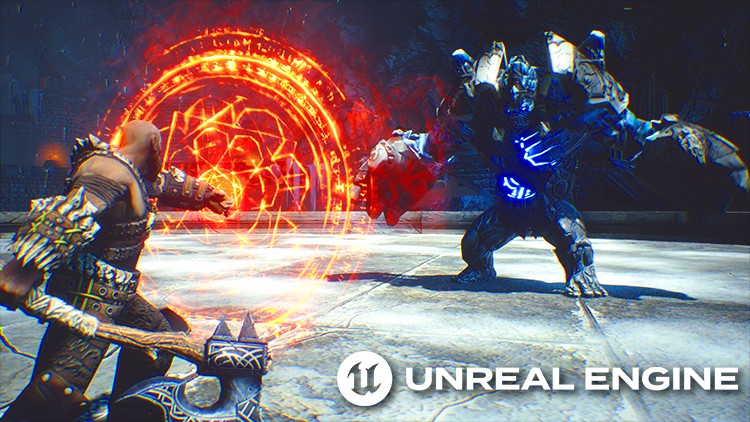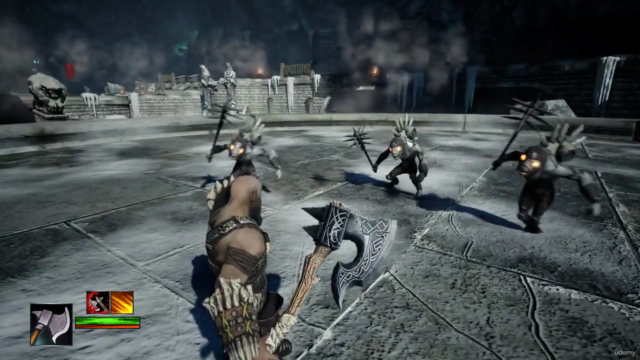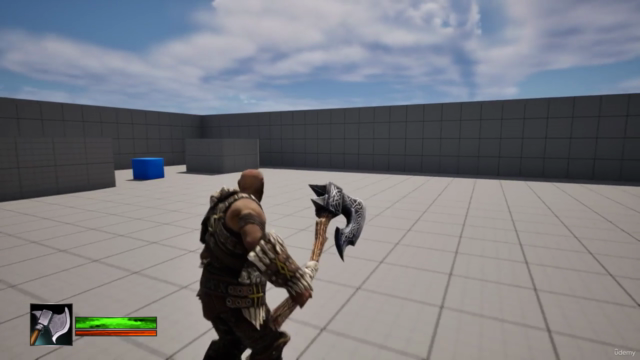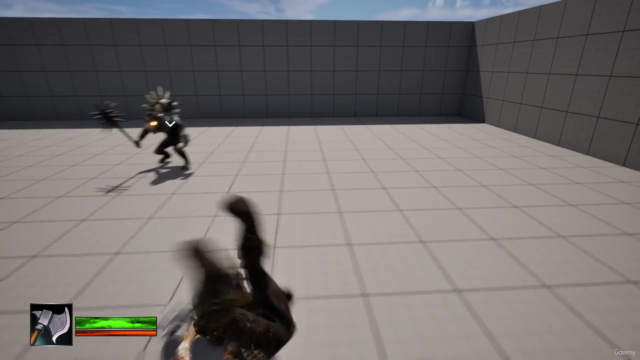Unreal Engine 5 C++: Advanced Action RPG

Why take this course?
🚀 Course Title: Unreal Engine 5 C++: Advanced Action RPG
🔥 Headline: Create advanced RPG combat experiences in Unreal Engine 5 with Gameplay Ability System (GAS) using C++
📖 Course Description:
Welcome to "Unreal Engine 5 C++: Advanced Action RPG" - the most comprehensive online course designed for enthusiasts and professionals alike who aspire to build AAA-quality RPG combat experiences using Unreal Engine 5 and C++. In this course, you'll dive deep into industry-standard coding practices and data-oriented design to craft a RPG with intricate combat mechanics that are both dynamic and responsive.
What You'll Learn:
-
Setting Up Your Hero Character: Begin by configuring your player character for the Gameplay Ability System (GAS) and learn how to bind inputs using native gameplay tags and data assets.
-
Melee Combat System: Create a robust melee combo system with light and heavy attacks, and understand how to combine GAS with linked animation layers to make your hero's actions come alive.
🔹 Key Features You'll Implement:
-
Light and Heavy Attacks
-
Directional Rolling and Hit Reactions
-
Blocking and Parrying Mechanics
-
Target Locking Abilities
-
Custom Function Library for Handling Damage
-
AI Avoidance, Strafing, and Projectile Attacks
-
Advanced Boss Fights with Summoning Capabilities
-
Enhancing Combat with AI and Special Abilities: Develop advanced AI behaviors using a blend of Blueprints and C++ behavior tree nodes. Implement asynchronous loading for startup data and explore crowd following components for detour avoidance.
-
Hero's Advanced Combat Abilities: Add directional rolling, blocking, parrying, and target locking features to your hero character, leveraging motion warping for dynamic effects and handling complex target lock abilities in C++.
-
Introducing Ranged Enemies: Design a ranged enemy that shoots projectiles and retreats, creating a balanced challenge for the player.
-
Boss Character Development: Construct a boss character with powerful melee attacks and the ability to summon other enemies, complete with a custom boss bar UI element.
-
Survival Game Mode: Develop a survival game mode featuring enemy waves, create engaging widgets such as win/lose screens, pause menu, and main menu to enhance player engagement.
-
Real Map Integration: Finally, port your fully functional combat system to a real map for epic battles against your enemies, ensuring a seamless transition from prototype to polished product.
Why Join This Course?
This comprehensive RPG course is unmatched online. With detailed code changes provided in each lecture and a step-by-step approach, we guarantee you'll have all the tools necessary to create your dream RPG project. Our instructor, Vince Petrelle, brings years of experience in Unreal Engine and C++ development, ensuring you get the most up-to-date and practical knowledge.
🌟 Course Highlights:
- Comprehensive video tutorials with detailed explanations of code changes
- Step-by-step guidance through the development process
- Real-world scenarios and challenges to test your skills
- Access to a community of like-minded learners and professionals
- Full project code for review and reference
Don't Wait! 🚀
Join "Unreal Engine 5 C++: Advanced Action RPG" today and embark on your journey to become an expert in creating advanced RPG combat experiences. Elevate your game development skills to the next level and create a masterpiece with Unreal Engine 5! 🎮✨
Course Gallery




Loading charts...
Comidoc Review
Our Verdict
This Unreal Engine 5 C++: Advanced Action RPG course excels in diving deep into industry-standard coding practices and data-oriented design for AAA RPG combat experiences. Incorporating Gameplay Ability System, this course provides a solid foundation for implementing advanced RPG features, while providing ample opportunities to explore Unreal Engine 5's capabilities. However, it may lack thorough explanations of specific UE functions used within the code and comprehensive multiplayer game implementation guidance. Additionally, teaching styles vary—some reviewers appreciate clear documentation with minimal time wasted, while others prefer extensive in-depth elaboration on concepts. Overall, an excellent starting point for intermediate learners seeking a hands-on experience in building AAA RPG combat systems.
What We Liked
- Industry-standard coding practices and data-oriented design teach AAA RPG combat experiences using Unreal Engine 5's Gameplay Ability System (GAS) and C++.
- In-depth coverage of implementing features like combo systems, directional rolling, hit reactions, blocking, parrying, AI avoidance, advanced enemy AI, epic boss fights, and more.
- Step-by-step guidance on setting up a hero character for GAS, input binding, navigation, animation layers, enemy characters, attributes, combat feedback, character death, robust UI notification system, custom function library, and handling damage.
- Exploration of advanced AI behaviors using Blueprint and C++ behavior tree nodes, crowd following component for detour crowd avoidance, environment query system, ranged enemies, boss characters, survival game mode with enemy waves, widget creation, and map porting.
Potential Drawbacks
- Absence of in-depth code explanation may make it challenging to understand specific UE functions and components used in the course.
- Lack of comprehensive multiplayer game implementation guidance leaves some aspects of GAS unexplored.
- Some reviewers find copying and pasting instructor's work more beneficial than understanding concepts, making it a less effective learning experience for them.
- Limited coverage of design behind the logic used in the course can hinder comprehensive understanding.